Beans are a tasty and healthy vegetable, which in terms of protein content is equivalent to meat. Bean dishes are nutritious and high-calorie, good for eating in the first and second courses during fasting and not only. But the housewives are faced with the problems of storing legumes after harvesting or buying a packaged bag from the store. Often bugs start up in beans.
Content
Bookmark for storage
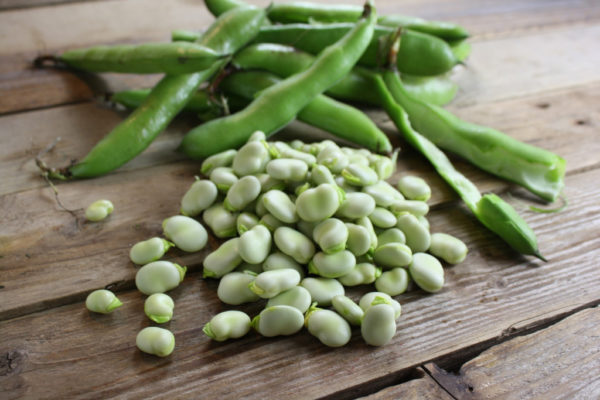
Beans can be eaten at a time of milk ripeness, when the pods are still green. It has not fully formed, but is suitable for cooking and requires little time for heat treatment. For harvesting and laying it for storage, experienced gardeners wait for the complete drying of the pods with a partial opening of the leaves. This means that the vegetable is ready to be removed. Before laying for storage, housewives trying to preserve their crops from pest attacks:
- They peel the beans, carefully sort it out and inspect for the absence of holes in the grain.
- Beans with defects noted for storage do not lay and either throw them away or eat immediately.
During the harvesting period, the beans are moist and require drying, without which:
- quickly deteriorate;
- wrinkle during storage;
- are attacked by pests.
Beetle Prevention
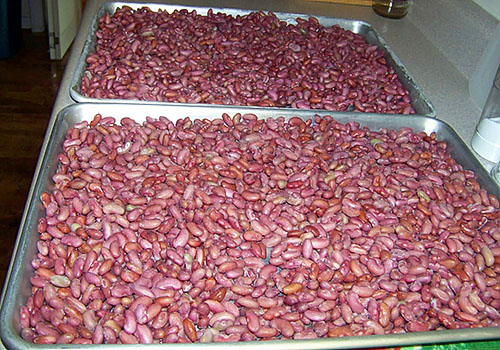
In order to preserve the harvest for food and seed for planting for the next year, the housewives use a number of measures that help, if not to kill harmful insects, then reduce the damage and prevent their reproduction. This is done with:
- warming up;
- vacuum storage;
- low storage temperatures;
- special processing of packaging material.
Warming up
So that the beetles do not wound up after exfoliation from the leaves and laying for storage, the fruits are dried. If the product will be used exclusively for cooking and not intended for planting next spring, the beans are laid out in one layer on a baking sheet and kept in the oven for 1 hour at a temperature of 60 degrees. All the larvae of harmful insects inside are killed during such heating. You can also do with any cereals purchased in the package.
Hermetic packaging and cold
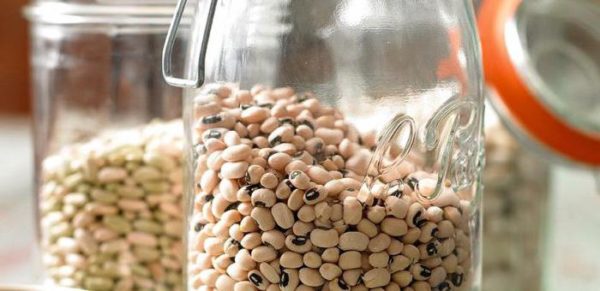
Next, the beans are laid out in jars and closed with a vacuum lid. In a vacuum, the beans are well preserved, do not get damp, do not dry out, and are not subject to pest attacks. The jars are kept in the refrigerator, and if the beans do not serve as seed, they are packaged in small portions and put in the freezer.
Seed storage
If beans will be used as seed in the future:
- it is laid out in a single layer on paper in a dry, non-sunny place;
- leave it for 5-7 days;
- then fall asleep in a linen bag or several layers of paper, put 2-3 cloves of garlic inside and put on the lower shelf of the refrigerator;
- low temperature, even if the larva is inside, will not allow it to activate.
Handling storage containers
If the hostess suggests store beans in a canvas bag, it can be soaked in saturated saline. No pest can penetrate into such a bag. The essence of the method:
- A saturated saline solution is prepared from water and sodium chloride in such a concentration that the chicken egg dipped into it does not sink, but floats.
- Dip the bag into the solution, completely moisten, and wring out.
- Dried on a clothesline, the bag will become dense, as if starched.
- Beans are poured into the bag and tied.
- Store on the bottom shelf in the refrigerator or on the balcony.
Pests
Bean kernel photo - a beetle of gray-brown color with a length of 2 to 5 mm. There are several reasons for the bean pest entering the house:
- from the garden;
- from the store;
- from neighboring cereals.
In the summer, the beetle pierces the leaflets of the legume pods and lays eggs inside. The larva gnaws on the insides of the fetus, then turning back into a bug, and the process repeats again and again until the insect completely destroys the crop if decisive measures are not taken. Bean kernels can live without food for about 3 months and fly long distances.
In the southern regions, the beetles spend the winter in the ground, and in the northern regions remain inside the grain. Infected beans can be identified by neat little holes. When storing beans at room temperature, the pests confuse the time of the year and begin to multiply actively and destroy the crop. Sloppy housewives, upon detection of uninvited guests, eat such a product. Previously, they get rid of bugs in beans, soaking the affected fruits in a strong saline solution, then bring the water to a boil. Alarmed by the annoying liquid, the beetles and their larvae hastily leave their “canteens” and die. Beans are washed under running water and dishes are prepared from it. To taste, it does not differ from intact. Mistresses, less frugal, if bugs are found in beans, just throw it away.
Sprout fly
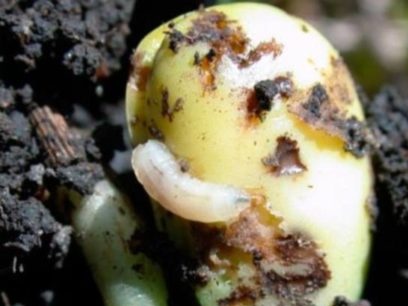
The sprout fly has a gray color with stripes on the back and a size of about 5 mm. Years of flies begin in the first half of May at air temperatures above +10 degrees. The first generation brings the greatest damage to the crop. The insect lays eggs in the soil, from which larvae emerge in a week, gnawing planted and swollen bean seeds.
So that the larvae of the germ fly do not bother, they fight with them:
- Beans are sown at air temperatures below +10 degrees.
- Prepare a deterrent mixture and sprinkle the beds with bean crops, slightly loosening the ground. The mixture consists of 200 g of ash. 1 tsp. tobacco dust, 1 tsp hot pepper.
- Sprouts are watered with saturated salt solutions. 250 g of the cooking layer is dissolved in 10 l of water and watered the ground during the emergence of the larvae.
- Sprouts are watered with garlic infusion prepared from 400 g of chopped garlic infused in hot water (50-60 degrees) for 24 hours.
- If folk methods do not help to get rid of a harmful insect, use insecticides (drugs to combat harmful insects, such as Decis, Fufanon). They can be used before flowering beans.
Bean Disease
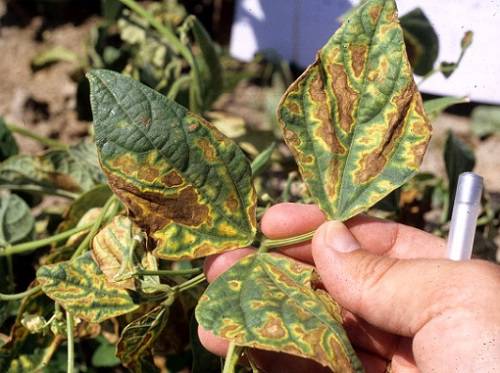
In addition to pests during growing beans various bacterial and fungal diseases and root rot lie in wait. Rusty spots appear on the leaves, pods and roots, which then turn black. To combat diseases, use a 1% solution with Bordeaux liquid. To reduce the incidence of legumes, the beans are pickled before planting. It is soaked in:
- 1% solution of potassium permanganate;
- a solution of baking soda, prepared and 1 tsp. soda and 1 liter of water;
- 3% hydrogen peroxide.
Dig the soil in the fall, keep clean on the bed, weeding out the weeds on time. One way to reduce the percentage of morbidity is to observe crop rotation. It is not necessary to grow legumes in one place for several years in a row. If possible, the beans for planting are returned to the old place after 5-6 years.In addition, earlier planting in cold ground (at a temperature of less than +10 degrees) leads to bean molds, and too deep penetration entails a siege of pathogenic bacteria.
Bugs wound up

If there are beetles in the beans, do the following:
- understand the scale of the disaster;
- if the damage is insignificant, iterate over, remove visible pests;
- Warm up at 60 degrees for 1 hour in the oven or pour in a concentrated salt solution, boil;
- if all the fruits are damaged - it is better to throw it away;
- shift in a small bag and freeze raw;
- rinse under running water, cook and freeze portioned boiled beans.
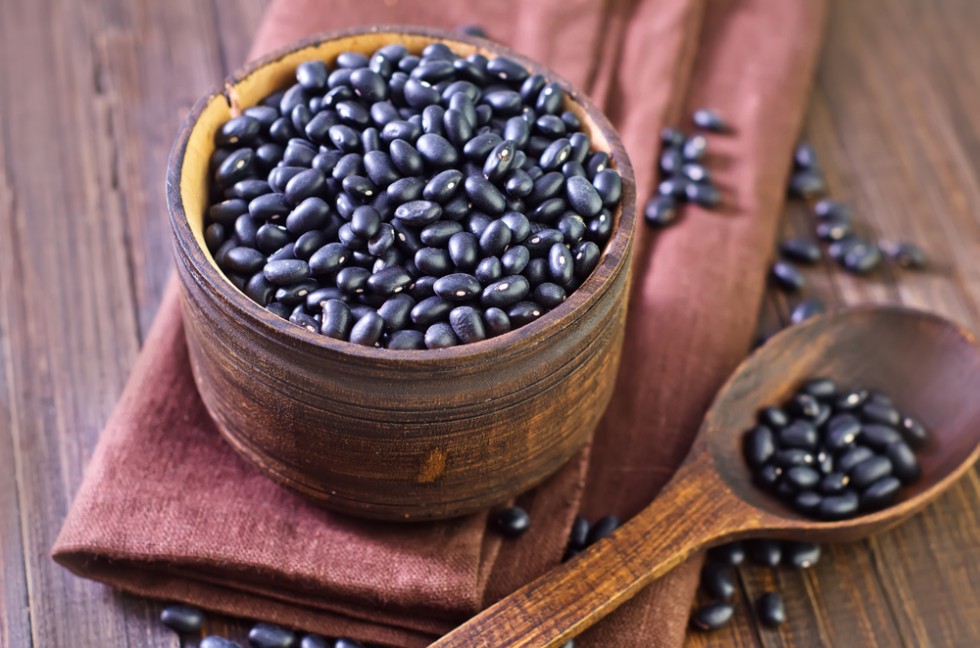 You may be interested in:
You may be interested in:Beans are a delicious healthy and nutritious vegetable that, in terms of protein content, can replace meat. To grow it, does not require special skills and knowledge. The main problem in preserving the crop is the correct ways to prepare for storage and preventive measures and storage in the cold. Then the percentage of losses will decrease significantly or not at all.

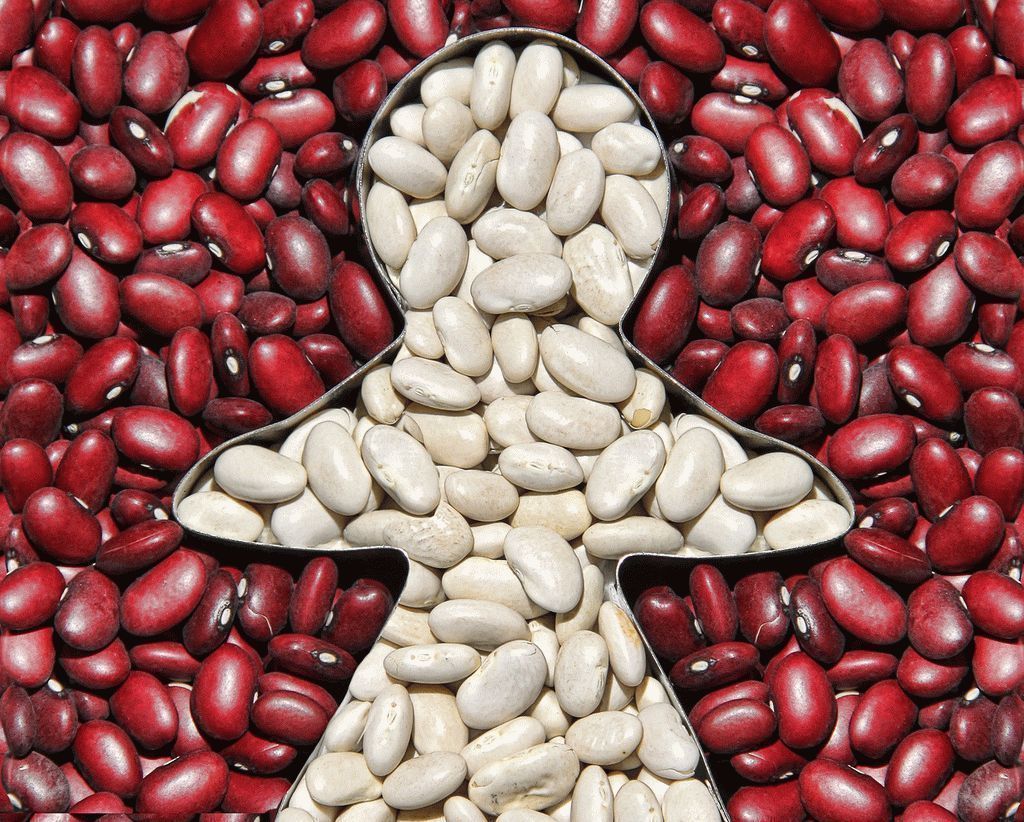
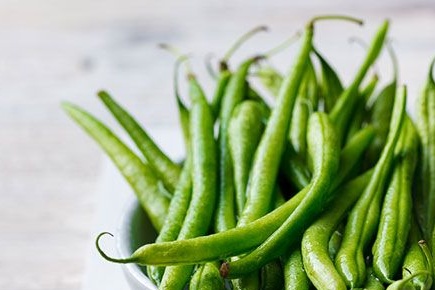
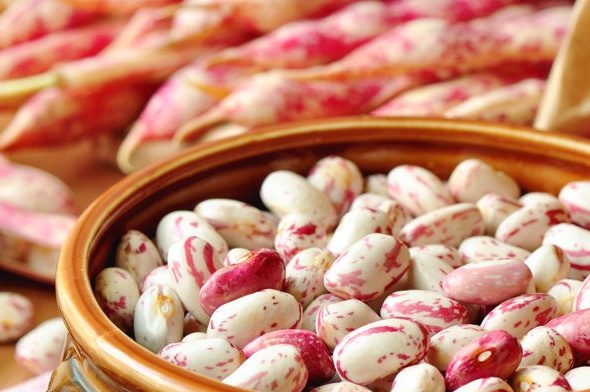
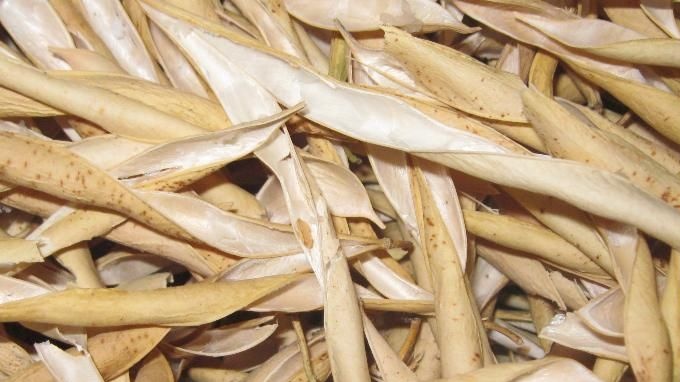 Bean flaps: useful properties, contraindications, benefits and harms
Bean flaps: useful properties, contraindications, benefits and harms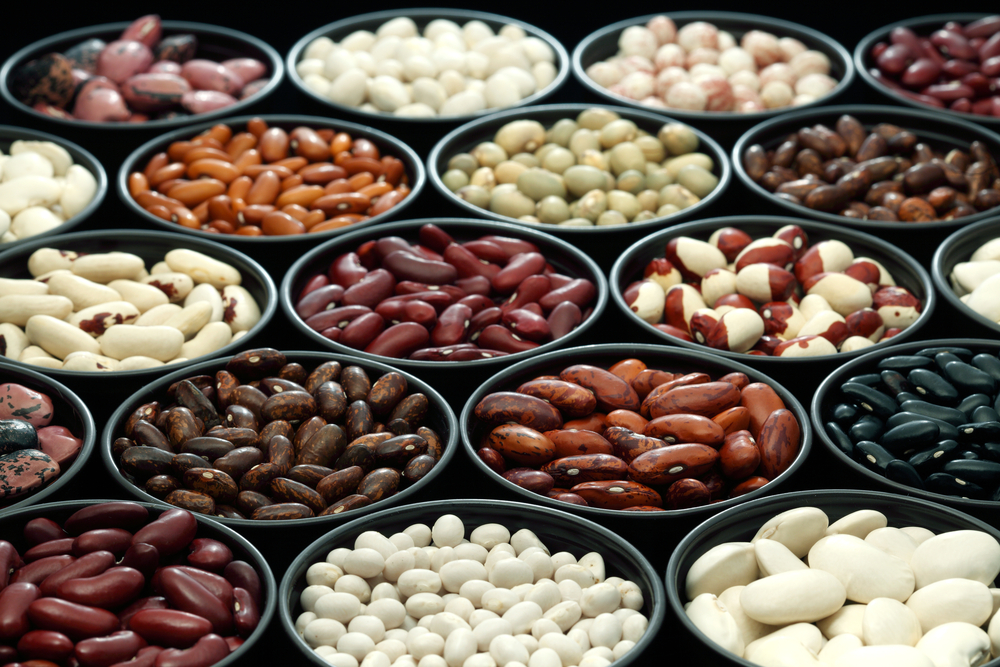 Beans for the body: composition, benefits, contraindications
Beans for the body: composition, benefits, contraindications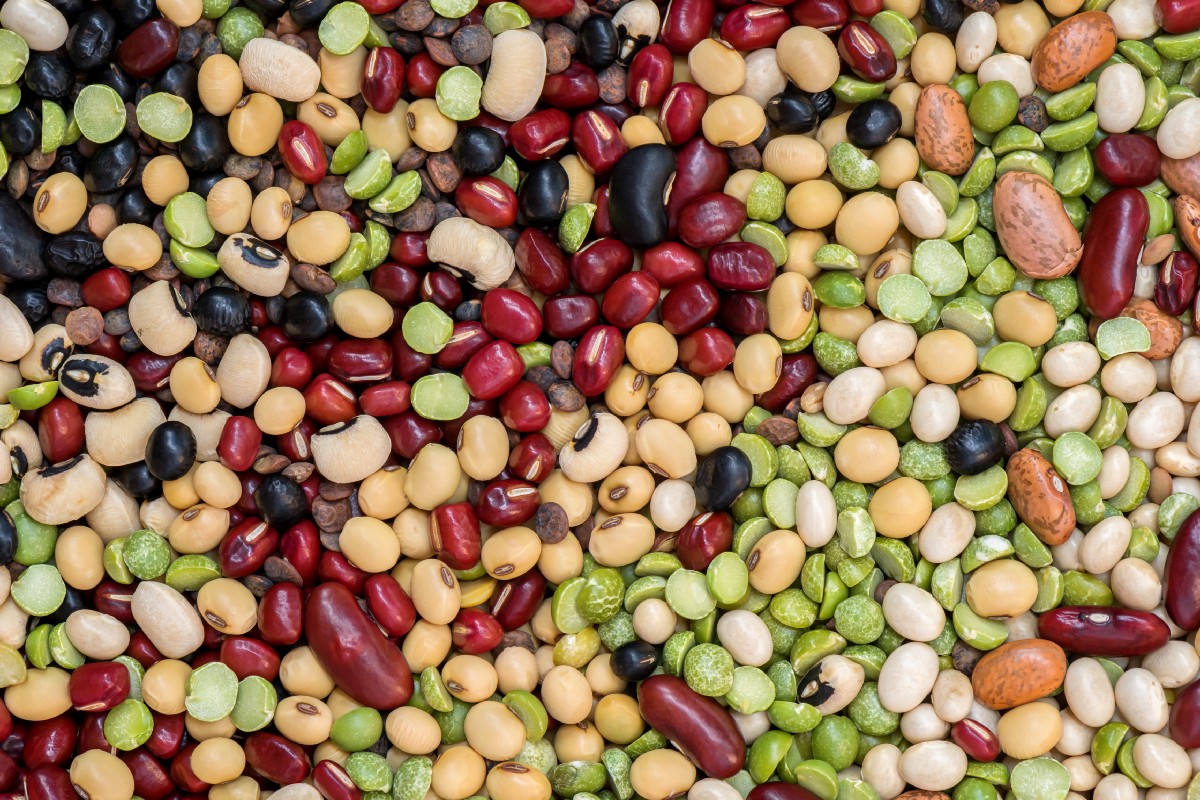 Types and varieties of beans: their name, description and photo
Types and varieties of beans: their name, description and photo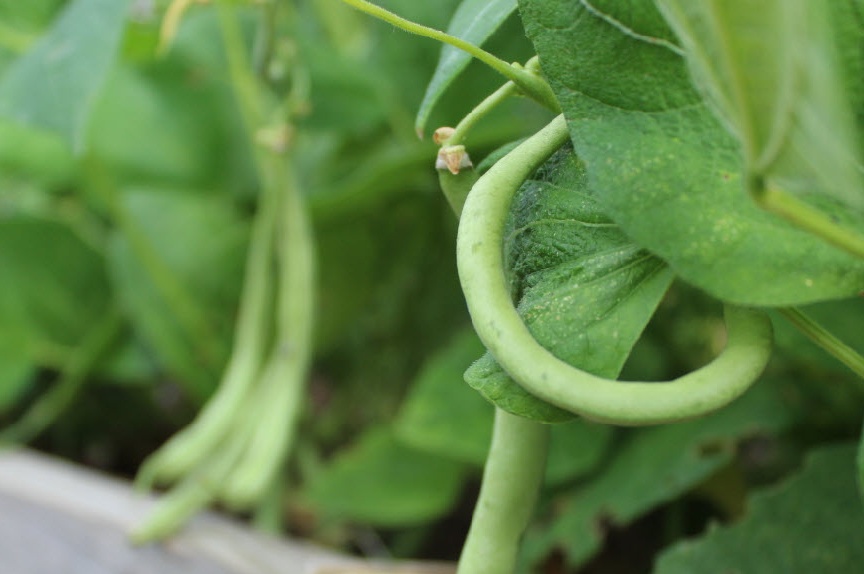 Description and photos of popular varieties of asparagus beans
Description and photos of popular varieties of asparagus beans